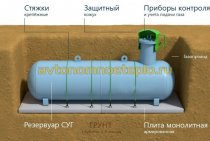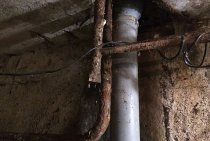Installing a convector installation steps photo
Today, the electric convector is one of the most popular types of heaters. This is due to a number of reasons. With it, you can heat not only individual rooms of your house, but the entire apartment. Installing a convector is a gentle process. That is why you should learn how to perform this process yourself.
In this article, we have described in detail each stage of its installation. Thanks to this, you will learn how to install the convector yourself. We tried to make this process easier with the help of video instructions.
Convector installation
Installing the convector on the wall consists of the following steps:
- First, the device should be unpacked and turned over to the back.
- Now you need to dismantle the fasteners.
- The bracket that you removed from the device should be leaned against the wall and the places of future fastenings should be canceled with a marker.
- If your house has a wooden wall, then the wall convector is installed using self-tapping screws. If the house has a concrete wall, it may be necessary to drill holes with a hammer drill. Then it is necessary to drive dowels into these holes and mount the frame. Here is a photo where you can see how to install the convector frame. If you are interested, then you can read how to connect an electrode boiler.
- Now the convector should be put on the installed bracket.
- Connect its power plug to a power outlet.
- Set the appropriate temperature. You can do this with a thermostat.
As you can see, the technology for installing an electric convector is quite simple. Even a beginner can complete this process. Below we provide you with useful tips to facilitate the installation process.
Useful tips for installing a convector
Sometimes many consumers may need to install an electric convector on the balcony. Usually on the balcony, the decoration is presented in the form of PVC panels. The convector is lightweight, but the plastic panels will not withstand it. In this case, you should try to choose a convector that is light in weight. In the photo below you can see options for these devices.
Installing a heating convector contains one more nuance that you should familiarize yourself with before performing installation. Usually, an instruction is included with the device, in which the manufacturer indicates the optimal distance from the floor. Heating in a wooden house can also be done using a convector. If you have not found or lost this manual, then you need to be guided by the following tips:
- The height from the floor should be 20 cm.
- Leave a gap of 20 cm from the wall.
- The distance to the nearest objects that surround him should be at least 20 cm.
- Above and in front, the gap should be half a meter.
- The socket must be at least 30 cm away.
Special attention should be paid to connecting the convector to the network. Typically, the power of this device does not exceed 3 kW
If your home has modern wiring, then it will be able to withstand this stress. If you want to do without cords, then you can connect the electric convector directly. To do this, you will need to run a separate cable from the shield to your device. Here is a video that will help you learn how to properly complete all the installation processes.
This is all the instructions that will help you perform a quality installation of the device. As you can see, the installation of the convector is not difficult.
An electric convector on the wall will quickly warm up the room
All convectors basically work like this
A convector is a device that works on the principle of thermal movement of air - convection. The essence of such a heating device is that cold air approaches the heating element from below, heats up and rises up, where it exits into special openings. A wall-mounted electric convector is an ideal option for heating individual rooms (bathroom, garage, office) and temporary dwellings (dacha, country house).
Kinds
Modern convectors are equipped with thermostats, built-in ceramic heaters and other necessary and not so necessary things. The principle of operation in any case remains the same.
Forced and natural circulation If you need to quickly heat a large area, the forced circulation option is ideal for you, although it consumes more electricity.
With and without timer
Advanced wall convector with display and timer
It is also worth noting that some modern convectors come with built-in shutdown timers and displays. Such devices are high-tech representatives of their class and can significantly save money.
For example, a Siemens 2NC8 042 4L convector can be programmed for a week so that it turns on 30 minutes before you arrive from work and turns off automatically after you leave. That is, you will always be in a comfortable temperature and not waste unnecessary electricity.
Mobile and completely stationary
Convector with wheels for easy movement
Many manufacturers make convectors that are sold immediately with wheels for floor placement. Those. they can be used permanently on the wall with brackets or heat a separate desired area of the room by moving the heater.
There are also convectors with a remote control that allows you to turn it on and off without getting up from the sofa / office chair. And separately there are options with a ceramic heating element, with a longer service life than steel.
Installation
All convectors are afraid of water. Many are protected against short circuits in case of water contact with the heating elements, but without exception, all are not designed for installation in places where direct exposure to large amounts of water is possible. For example, right next to the sink or bathroom, if you bathe a child in it, in the pool, etc.
The procedure for mounting a wall-mounted electric convector
Because Since these heating elements take cold air from below, during installation, ensure at least 10 cm from the floor for a free flow of cold air. By the way, this is the optimal height for its installation, because. the lower the outlet grate of the wall-mounted electric convector is located, the greater the efficiency it provides
Advantages and disadvantages
The undeniable advantages of wall convectors are:
- Price - among electric heaters - the lowest
- The speed of warming up the room - due to the fact that the air is warming up, and not the objects and the convector itself, heat is felt already a few minutes after switching on
- Flexible room temperature setting. The presence of thermostats allows you to achieve a comfortable temperature by simply rotating the wheel or pressing a button.
The disadvantages include:
- Great power consumption. The wall convector itself practically does not heat up, but only heats the air passing through it, so the on / off cycle depends only on the heating of all objects in the room from the air, and this is very long.
- Afraid of water. But only water, not moisture. And only while working.
- Dries the air. Very much. To avoid exacerbation of respiratory diseases, it is necessary to humidify the air, for which it is best to purchase a special humidifier, but this, you see, is already an extra expense.
Scope of application
Electric convector provides a comfort zone
It is not advisable to use wall-mounted electric convectors as the main heating due to low efficiency and a bad effect on the air in the apartment. If we consider only the option of electric heating at the same price, then it is better to take an oil heater as a constant source of heat in housing, which, although it does not warm up the room so quickly, does not burn out oxygen and has a greater efficiency.
A wall-mounted convector is used in utility rooms, in bathrooms, in a country house, in a country house, where you can put up with their obvious shortcomings due to the fact that you are in this room for a short time and they turn on from time to time
How to install a convector How to use a convector Apartment renovation
September 26, 2018
Author How Easy!
Modern convectors are offered on the market in a wide range. They can be independently mounted and installed by the buyer. In addition, such a convector can be transported and, if necessary, used both in an apartment and in a country house. It can be hung on the wall or installed on special legs. In any case, please read the instructions carefully before installation. Follow the manufacturer's recommendations.
You will need
convector, special legs, brackets, factory mounting kit
Instruction
Offer from our partner
Related videos
note
There must be a distance between the convector and the floor. It is impossible to put the convector directly on the floor, otherwise the fuses will work. Also, the convector can simply break if it is installed on the floor.
Is the advice helpful?
How to install a convector
Related Tips


